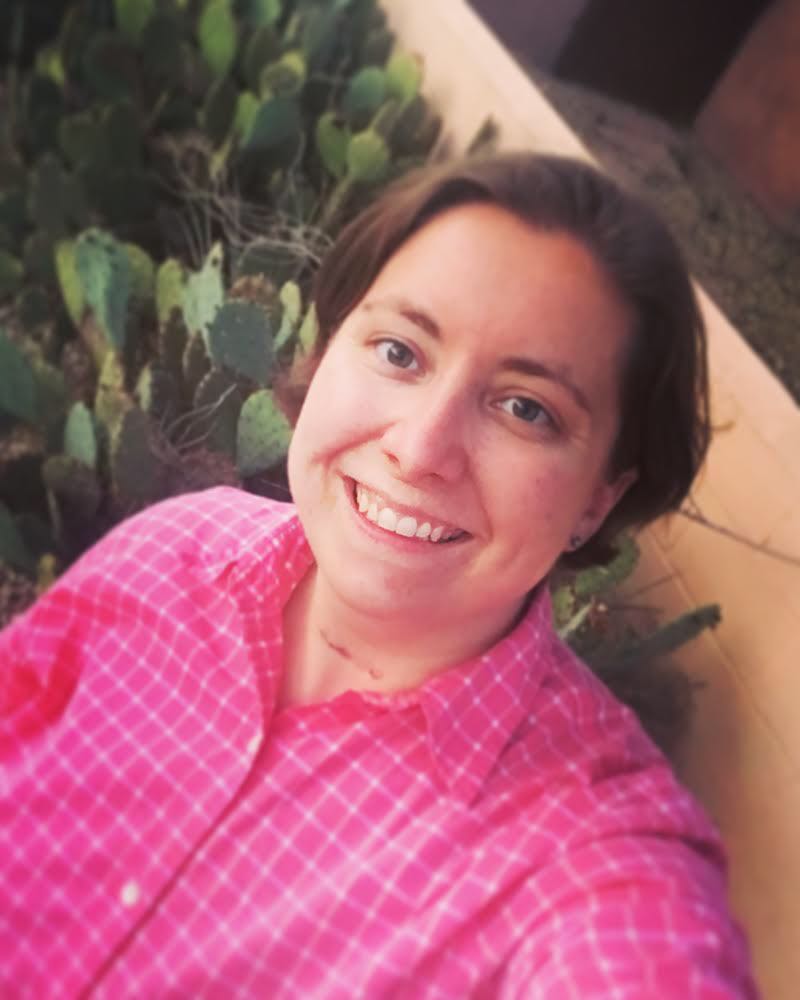This blog post is part of Mennonite Church USA’s Welcoming EveryBODY: Learn, Pray, Join initiative.
 Rev. Erica Lea-Simka [she/her/hers] is a graduate of San Jacinto College, Texas A&M University and Truett Theological Seminary. She has also studied as a continuing education student at Anabaptist Mennonite Biblical Seminary (AMBS) and Eastern Mennonite University (EMU). Pastor Erica has served Baptist and Mennonite congregations and began serving as pastor of Albuquerque Mennonite Church in Nov. 2017. She also serves as the Southwest Representative for Mennonite Women USA. When not at church or the public library, she can be found cooking, powerwalking, travelling, watching British mysteries and spending time with her interfaith family.
Rev. Erica Lea-Simka [she/her/hers] is a graduate of San Jacinto College, Texas A&M University and Truett Theological Seminary. She has also studied as a continuing education student at Anabaptist Mennonite Biblical Seminary (AMBS) and Eastern Mennonite University (EMU). Pastor Erica has served Baptist and Mennonite congregations and began serving as pastor of Albuquerque Mennonite Church in Nov. 2017. She also serves as the Southwest Representative for Mennonite Women USA. When not at church or the public library, she can be found cooking, powerwalking, travelling, watching British mysteries and spending time with her interfaith family.
_________________________________________________________________
It happened so naturally that I hardly noticed until I finished serving a particularly long line of people who had come forward for communion. As I straightened my body and stood at full height, I realized that, with each person I had served, I had bowed and leaned in.
“The bread of heaven,” I said, while placing a morsel of bread into the light hand, dark hand, weathered hand, smooth hand, one hand reaching, two hands palmed. A slight bow at my waist for those shorter than me and a slight bow, at least from my shoulders, for those taller than me. I moved my hand to their hand, passing eye contact and passing the bread of heaven. “The cup of life,” the chalice bearer assured those who came forward to receive.
Even with the most thorough and thoughtful communion practices online during COVID-19, nothing can replace the hand-to-hand, eye-to-eye contact of fully embodied, together, in-person communion.
As a pastor living with chronic illnesses, serving a congregation of diverse abilities, I recognize the power of my body and others’ bodies on a weekly basis, if not daily. When I bow while serving communion, my wounded body communicates, “The imago dei in me recognizes the imago dei in you. Let us receive grace into our bodies together.”
The Gospels make a big deal about Jesus’ embodiment. The authors of the Gospels were careful to mention that Jesus ate, slept and otherwise lived within the body he was given. Many scholars will intellectually dismiss Jesus’ embodiment in the Gospels as the authors refuting various heresies, such as Docetism, which taught that Jesus only appeared human.
While countering unorthodox beliefs may be an accurate motivation for the writers of the Gospels, I wonder if we sometimes miss out on celebrating Jesus’ body — wrinkles, wounds, scars, limps, prosthetics, chemical imbalances, assistive devices and all.
What would it look like to follow the way of the wounded healer, rather than an airbrushed Jesus with carefully procured wounds, when Thomas’ interactions with him come up in the lectionary cycle? To be human is to experience a wide variety of abilities and disabilities among our species. To celebrate the human Christ is to experience a Jesus with a wide variety of abilities and disabilities. When we receive communion, we remember the wounded Christ, his life and body given for us — abilities, disabilities and all.
The bread of heaven. The cup of life.
 Welcoming EveryBODY: Learn, Pray, Join celebrates the many gifts that people with disabilities bring to our church communities. This initiative also calls us to repent as a church in the ways we have not fully seen or welcomed people with disabilities. May we commit to being more loving and aware as we care for one another.
Welcoming EveryBODY: Learn, Pray, Join celebrates the many gifts that people with disabilities bring to our church communities. This initiative also calls us to repent as a church in the ways we have not fully seen or welcomed people with disabilities. May we commit to being more loving and aware as we care for one another.
This initiative is a partnership between Mennonite Church USA and Anabaptist Disabilities Network (ADN).
Find upcoming webinars and ways to get involved at https://www.mennoniteusa.org/ministry/peacebuilding/learn-pray-join/welcoming-everybody/.
The views and opinions expressed in this blog belong to the author and are not intended to represent the views of the MC USA Executive Board or staff.

